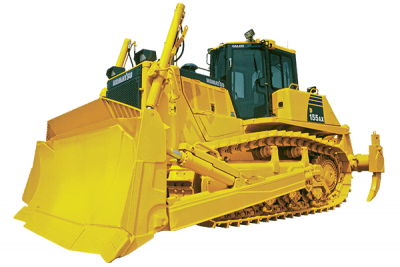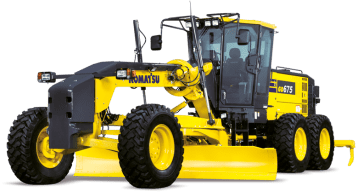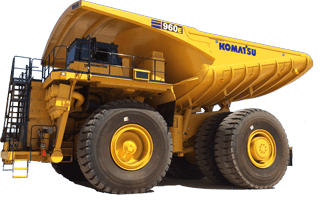News and media - press releases: Race car vs. Excavator: Pushing the limits of hybrid technology
Source: NewScientist (advertorial)
Operating globally with over 65,000 employees, Komatsu has been at the forefront of innovation within mining, construction and forestry for over 100 years. The Japanese company’s dedication to cutting-edge technology has made it a pioneer in its field, notably going to market with the first ever hybrid hydraulic excavator in 2008.
This relentless drive for innovation was an instigating factor for its reignited partnership with the iconic British Formula 1 team Atlassian Williams Racing. The two brands first worked together in the 1990s, when Komatsu produced gearbox components for the World Championship-winning FW18 and FW19 F1 cars. In this new era, Komatsu and Williams are focused on shared values, talent development, and their surprisingly similar technologies.
At first glance, the 37 tonne Komatsu HB365LC-3 excavator and high-speed Williams FW47 car look as if they are from completely different worlds. But dig a little deeper and there are myriad common engineering principles and elements, most notably in the form of the hybrid system.

Hybrid on a huge scale
Inside the HB365LC-3 lives Komatsu’s cutting-edge hybrid system, which works alongside a six-cylinder internal combustion engine. How it works is that the machine’s electric swing motor- captures energy as the immense structure slows. The regenerative energy produced during deceleration is then converted into electricity and stored in a capacitor. This source can subsequently be used by the generator-motor to supplement the machine’s power and help the engine accelerate, or to perform the excavator swing function.
The use of hybrid technology during this process can reduce overall fuel consumption by up to.
Komatsu has over a century of experience in electrification, with a track record of producing electric drive mining trucks, ultra-class electric wheel loaders and electric mining and rope shovels. Looking towards the future, the company is now developing the next generation of Power Agnostic mining trucks that will work in conjunction with Komatsu’s Autonomous Haulage Systems.

High-speed hybrid
Moving over to the FW47, the principles and purpose of its hybrid system mirror that of the Komatsu excavator – the aim is to optimise efficiency.
Coupled with the V6 engine of the Williams FW47 is a hybrid system in the form of a battery and two Motor Generator Units: an MGU-k (kinetic) attached to the gearbox and an MGU-h (heat) which is connected to the turbocharger. When the driver brakes, the MGU-k converts kinetic energy that would usually be lost as heat through the braking system into electricity which is stored in the battery. That stored energy can then be used to accelerate the car as it powers out of corners, providing supplementary energy to the combustion engine. This function of recovering and deploying energy that would normally be lost dramatically increases the efficiency of the car’s power unit.
The other element of the FW47’s hybrid system, the MGU-h, harvests waste energy from the exhaust, which can then go on to either charge the battery or power the other MGU attached to the gearbox, aiding in the propulsion of the car around the circuit. Alternatively, this energy can go back into the turbocharger itself and help provide the car with an additional boost as it exits corners.
Thanks to the nature of the hybrid system, the current generation of Formula 1 car – including the Atlassian Williams Racing FW47 – hosts one of the most efficient internal combustion engines ever produced. This is only set to increase in 2026, with the new regulations increasing the cars’ reliance on hybrid power to 50%, another step forward in the sport’s journey to net zero.

Engineers of the future
Away from the machines, Komatsu and Williams continue to work together on initiatives designed to inspire the next generation of engineering talent. The Komatsu-Williams Engineering Academy was born out of this strive for change, with the programme offering a prime opportunity for 16–20-year-olds from around the world to take the next steps into their STEM futures. Access to mentorship, internships, learning materials and facilities from both companies gives the cohort unparalleled resources to develop their engineering skills.
As a partnership, Komatsu and Williams are creating value together, as well as pushing the boundaries of engineering within their respective fields. And whether it be in some of the harshest conditions on the planet or on the world’s most iconic racing circuits, both companies are dedicated to maximising the power of hybrid technology.













